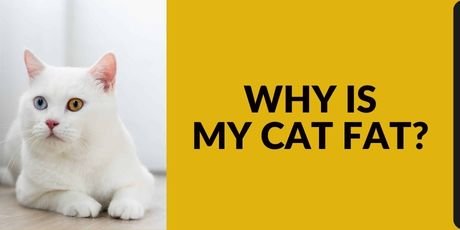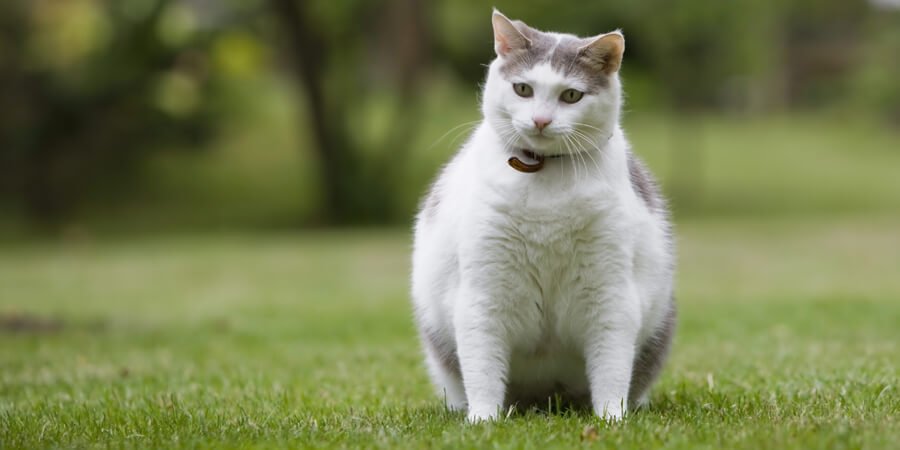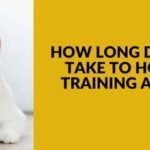As cat parents, we often get asked why our feline friends might be overweight. A chubby cat is not just cute but can be susceptible to various health problems. To help them lose weight, understanding the root causes is essential. Often, they are simply being overfed, with extra treats or people food contributing significantly to weight gain. As they get older, the problem can worsen without proper dietary changes and exercise habits. A healthy rate of weight loss is vital.
But what if your overweight cat’s condition is a health issue? In these cases, testing and treatment are necessary. A comprehensive approach is best, which is why I encourage you to continue reading this article for a more in-depth understanding.
Why is My Cat Overweight?
Feline obesity has become something of an epidemic, with cat health problems often stemming from being overweight. When your cat has packed on pounds, understanding the reasons behind their fat build-up is crucial. Overfeeding
- Lack of exercise
- Too many treats
- Giving your cat food meant for humans
Cats can become lazy or lethargic as they age, contributing to them gaining weight. Once active cats might start avoiding jumping around, finding it too risky, and preferring a long cat nap instead. This inactivity, combined with too much food or the wrong food, is a common cause of fat accumulation in cats.

Cats are What they Eat
It’s a simple truth that cats are what they eat. While many opt for convenient dry food, it’s often loaded with carbohydrates – not ideal for creatures meant to consume animal protein to thrive. Wet food, meanwhile, often offers better quality nutrition. The occasional treats are fine, but beware of people food like cheese or whipped cream, as cats are carnivores and not designed for such foods.
I’ve noticed that when my cat consumes too many carbs, she gains calories leading to weight gain. Instead of big meals once a day, I’ve switched to smaller, frequent portions. This, coupled with regular exercise, has significantly contributed to her overall health, a strategy that not only benefits cats but people too in their diet and daily activities.
Also Read: Why is My Cats Stomach Bloated and Hard?
Health Conditions Can Contribute to Weight Gain
If your cat has gained weight but lacks an appetite, they may have a health issue, such as hypothyroidism or Cushing’s disease. The following explains both health issues:
Hypothyroidism
Sometimes, if your cat has gained weight yet lacks appetite, it could indicate a health issue like hypothyroidism. This hormonal condition causes the metabolism to slow down, inadvertently stimulating weight gain.
- Lack of energy
- Decreased appetite
- Poor coat
- Constipation
Other symptoms can include hair loss and a general lethargy. It’s interesting to note that while kittens can be hypothyroid, they may develop hyperthyroidism as they get older. For those cats diagnosed with hypothyroidism, hormone replacement therapy, often in the form of levothyroxine, can be a game changer. My own experience with a hypothyroid cat taught me the importance of early detection and management.
Cushing’s Syndrome
In exploring reasons for a cat’s weight gain, Cushing’s Syndrome should be considered. This condition, an abnormality in the pituitary gland, leads to the production of excess cortisol.
- Excessive thirst
- Increased urination
- Distended belly
- Poor coat
- Lack of energy
- Muscle wasting and weakness
Symptoms of Cushing’s disease in cats might include fragile skin, easy bruising, and wounds that don’t heal at an average pace. It can also be linked with diabetes mellitus, as increased cortisol levels affect insulin sensitivity in the body. Treatment often involves drugs to control cortisol production, but in some cases, surgery or radiotherapy might be necessary. I’ve learned from my vet that early diagnosis and treatment are crucial for managing this complex condition effectively.
How Can My Cat Lose Weight?
Many people unknowingly contribute to their cat’s weight issues by leaving out a bowl of dry food every day for their cats to eat at their disposal. This practice often leads to overfeeding. The key to helping your cat shed pounds is to figure out the appropriate number of calories for their size and activity level.
Cut Back on Food (If it is Too Much)
To help your cat lose weight, the first step is to figure out how much food they should have per day. Weighing their food with a kitchen scale can be a game-changer. Once you know the number, you can determine if you need to cut back on their food intake to stay within the correct range. It’s also essential to check their diet and feeding habits. I’ve found that switching to smaller meals more frequently, using a slow feeder bowl, can effectively control your cat’s eating. This approach not only assists in their quest to lose weight but can also improve their digestion.
Change the Food
For cats, as obligate carnivores, requiring high levels of animal protein is crucial to stay healthy. Elements like taurine and fatty acids, especially omega 3’s and omega 6’s, are vital for their overall health.
- Beef
- Chicken
- Turkey
- Fish
- Lamb
- Duck
The aim should be to provide around two grams of protein per day, preferably from an animal-based source. It’s important to avoid foods high in carbohydrates and sugar, as they can lead to body weight gain. Given their higher protein prerequisite, always read the label when purchasing cat food, opting for options higher in protein and lower in fillers.
Exercise Them
Exercise is one of the surefire ways for a cat that has gained weight to lose it. Play is essential, especially for cats that tend to be more sedentary as they grow older. Unlike kittens, who naturally have bursts of energy and are a constant joy to watch, older cats often prefer to sleep more and move around less. I’ve found using a cat teaser wand, dragging it around the house and enticing them to chase, or simply tossing a ball across the room to be effective. Puzzle feeders can increase activity, and even something as simple as placing food in different areas of the house encourages them to hunt, find, and eat. While cats may spend up to sixteen hours sleeping, ensuring they are not lethargic or inactive during their awake hours is crucial. Regular exercise keeps them fit and trim, their muscles strong, and also triggers quality mental stimulation. Sharing in playtime not only helps their physical health but also encourages bonding between pet and owner.
What Are the Benefits of High Protein Low Carb for Cats?
- For cats, a high protein diet is essential to sustain energy and derive optimum nutrients. The benefits of a high protein, low carbohydrate diet go beyond just eating Energy boost to be utilized for activity or play
- Optimum health and well being
- Decreased risk of diabetes
- Decreased gastrointestinal issues
- Potentially longer life
Cats that suffer from chronic illnesses, such as chronic kidney disease, can especially benefit from this diet. It helps them process their food better, maintain a healthy weight, and potentially increase their lifespan.
Also Read: How to Tell If you’re Cat Has Whisker Fatigue?
What is Obesity in Cats?
Obesity in cats occurs when a pet is overweight, typically weighing 10-20% above their ideal body weight. When the excess fat exceeds 20%, it’s considered obese. Feline obesity is a common disease, with studies showing about 63% of cats in developed countries are affected. This condition poses significant health risks, including a weakened immune system, various endocrine and metabolic disorders, cardiovascular disease, and arthritis. Middle-aged cats, especially those between 8-12 years old, and those that are neutered and indoor-only or primarily indoor, are at higher risk. Effective diet and feeding strategies are crucial for successful weight management. From personal experience, addressing these aspects early can greatly improve a cat’s quality of life and longevity.
Symptoms of Obesity in Cats 8 points
- Visible weight gain is one of the most apparent symptoms of obesity in cats.
- Difficulty with jumping or climbing stairs often indicates weight issues.
- A tendency for sitting or lying down more, with an unwillingness to move around.
- The loss of a visible waistline can be a telltale sign of obesity.
- When a pet parent can no longer easily feel their cat’s rib bones or hip bones.
- Viewing your cat from above, if their back appears flat and the cat profile is more rectangular.
- A dirty, messy, or unkempt hair coat due to difficulty in grooming.
- A collar getting tighter or less frequent bowel movements and increased passing of gas.

Causes of Obesity in Cats
Obesity in cats is often attributed to a mix of animal-specific factors and diet-specific factors.
Animal-specific factors
- Age: It’s observed that Middle-aged cats, typically between 8-12 years old, are more prone to becoming overweight compared to their younger or elderly counterparts.
- Neutered: Both neutered male and female cats often develop a stronger appetite than unneutered cats, contributing to weight gain.
- Environment: The environment plays a significant role, with indoor cats who have restricted outdoor access more likely to be overweight due to inactivity and having fewer opportunities to exercise and burn calories.
Diet-specific factors
- Type of diet: The choice between dry food and canned food can impact weight gain in cats. Dry food is often more calorie-dense.
- Inaccurate food measurement: Not using a consistent scoop or known measure, like a ¼-cup measuring cup instead of a random plastic cup or varying bowl size, can lead to overfeeding. Always measure food
- Rapid food consumption: If your pet eats quickly, it might be due to boredom, leading to crying or begging for food. Feeding your cat more food or off schedule to keep them entertained and quiet can cause weight issues.
- Indulgent feeding practices: Feeding one or two large meals a day increases the risk of obesity. Despite begging, consider switching to small, frequent meals.
- Excessive treats: Treats are often higher in fat and calories than a cat’s regular diet. Giving too many treats throughout the day can significantly add to the total calories and result in a nutritionally unbalanced diet.
How Vets Diagnose Obesity in Cats?
Veterinarians diagnose obesity in cats by assessing their body weight and using tools like the Body Condition Score chart. These charts and comparable methods provide an assessment framework, with instructions on how to look and feel for specific places on a cat’s body. Two cats of the same weight can have different fat disposition relative to their skeleton, so a vet’s visual assessments and assessments by feel are crucial to determine if a cat is obese. Visual assessments involve checking the ribs, hip bones, and waistline for visible fat deposits. During a palpation, the vet will feel for rib bones; if a cat is severely obese, the ribs may be difficult to locate under a thick layer of fat. Additionally, if the spine and hip bones are covered in fat pads and the belly is distended past the waistline, it’s indicative of obesity. Vets also diagnose conditions linked to obesity, such as joint discomfort, high blood pressure, or high blood glucose, during a physical exam. This often includes bloodwork and findings from manipulation of hips and knees. It’s important for a veterinarian to conduct a thorough exam and perform bloodwork to develop an appropriate and safe management strategy for achieving weight loss.
Also Read: Why is My Cat Growling?
Treatment of Obesity in Cats
Dealing with feline obesity necessitates a comprehensive approach. It’s important to provide your veterinarian with an accurate description of your cat’s environment and the food provided. This includes the types of food you offer, the amounts, and the frequency of feeding. I’ve learned that using a measured scoop and noting the times fed each day plays a crucial role in formulating a successful weight loss plan.
When considering your cat’s health, your vet will calculate an appropriate target goal for the calories consumed per day to promote weight loss. Together, you will work to employ various strategies to effectively tackle your cat’s obese condition. Remember, each cat is unique, and their weight loss journey should be tailored to fit their specific needs and lifestyle.
Dry vs. canned diet: Switch from dry to canned diet to better achieve nutrient goals. Serve moist food at room temperature for 2-4 hours to prevent bacterial growth. It’s important to wash dishes with warm soapy water between feedings.
Prescription: Prescription veterinary diets like Metabolic-control help promote weight loss and induce ketosis, where the body burns fat for energy instead of glucose from carbohydrates. This leads to a reduction in calorie intake.
Timed feeds vs. free choice: Discuss with your veterinarian the best feeding strategy that suits your cat’s lifestyle: timed feeds vs. free choice.
If I Spay or Neuter My Cat, Will it Cause them to Gain Weight?
It has been shown that cats can become overweight after spaying or neutering. To counter this, experts recommend a decrease in the amount of food by about 20-30% post-procedure. It’s crucial to watch their body condition closely. For a kitten, ensuring their diet meets the needs of growing cats until they reach about 1 year of age is important to maintain a healthy weight.
What are the Factors that Make a Weight Loss Plan Successful?
The keys to success in a cat’s weight loss plan involve working as a team with family and your veterinarian. Being flexible is crucial because every pet has different nutritional needs. It’s important to assess the individual and tailor a program that considers the whole cat. Helpful tips include keeping track of all forms of food your cat gets, regularly weighing your cat on an infant scale, and buying precise measuring tools like a gram scale for owners to use at home. While measuring cups can be tricky, they’re essential for ensuring the exact amount of food is given.
If My Cat is an Indoor Cat, How Do I Make Sure they get Enough Exercise?
Being creative is key to ensure your indoor cats are enjoying enough physical activity. Spreading their food around the house or using food dispensing toys and laser lights can significantly increase their activity level. One client I know opens a can of cat food, and the cat follows them around for 5-10 minutes before the meal, turning it into an exercise routine. Additionally, there’s an excellent website by Ohio State University that helps owners with environmental enrichment for their pets.
Conclusion
Understanding and addressing the causes of feline obesity is a multifaceted endeavor that requires attention to diet, exercise, and overall lifestyle. Whether it’s switching to a healthier diet, regulating food portions, or incorporating more play and activity into their daily routine, the steps we take can significantly impact our feline friends’ health and longevity. Collaborating with veterinarians, being mindful of our pets’ nutritional needs, and staying informed about their health conditions are crucial in managing their weight effectively. As cat parents, our vigilance and care not only ensure the well-being of our beloved pets but also strengthen the bond we share with them. Remember, a healthy cat is a happy cat, and it’s up to us to provide the best care possible for our furry family members.
People Are Also Interested In:
How do I get my indoor cat to lose weight?
Goal: For weight loss in cats, reduce the calories they consume and increase the energy used. Work with a veterinarian to choose the right diet, ensuring they’re fed the correct number of calories per day. Encourage weight loss by keeping them moving around the home, playing, and jumping during meals, or even taking them for a harness-leash walk. Reduce potential stressors in households with multiple cats or little kids by providing a quiet place to retreat, and offering meals in a separate place.
Also Read: Ways to Make Your Cat’s Vet Visit Less Stressful
At what point is a cat overweight?
A cat is considered overweight when they weigh 10-20% above their expected body weight. Assess their body condition to determine if they are ideal, overweight, or obese. Obese cats have a body weight over 20% of the ideal.
Does obesity shorten a cat’s life?
Yes, obesity can lead to the development of various diseases that can shorten a cat’s life, including diabetes, certain types of cancer, metabolic diseases, respiratory diseases, and heart diseases.







